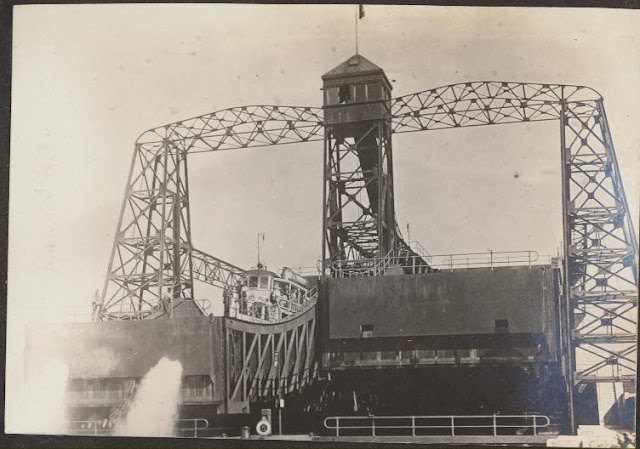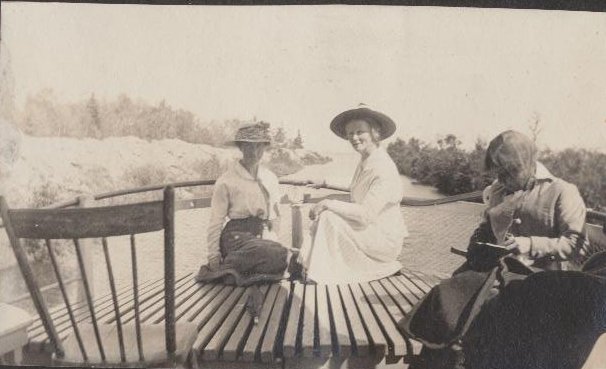Back in the 1950s, every Friday night, there was square dancing at the Sturgeon Point Golf Club. Hugely popular, these evening were organized by Minnie Gray. The live music was provided by local musicians and the caller was Walter Junkin.
This painting was found at a local garage sale by Mr. Shea and is now owned by one of his daughters. A copy of the painting was taken by Joan S. and she has shared with us the only known image of the square dancing.
Square Dancing at The Sturgeon Point Golf Course
artist unknown
Only a few of the dancers have been identified - on the left, spinning the girls, with his back to the room is Joan S.'s brother-in-law, Russell S. The late Jim Macmillan is in the blue jeans and blue top closest to the band. But known attendees include Paddy M., the twins - Tim & Mike, Ian K, Nelia, Penny & David, Sally, Bev & Barb, Martha D - who advised that although she was much younger, her mother would bring her down and she would sit on the table in the back and watch the dancers. Bob Wisner was an infrequent attendee but excellent dancer. Russell Rutherford would also show up. There were usually two full sets of dancers and sometimes a third was squeezed in.
To recover from the dancing, they took breaks on the verandah where they purchase bottles of pop and nibbled on snacks.
Robin O. met Maureen at a Golf Club square dance. She was working with her friend Lois as the Heinzman's summer babysitters at Swananowa. Supposedly as they walked off toward the first tee, the nasty little boys lined up and made cat calls from the varandah.
Penny recalls that she wore a black felt skirt decorated with white rope and turquoise bows. She received the turquoise blouse for her birthday and it was made of this fantastic new material called "nylon". It had a peter pan collar and pearl buttons. The girls all wore their saddle shoes. Penny and Nelia both still have their skirts.
Penny also told a great story of feeling unwell at one of the square dances and going back to Granny Lucas' cottage on Henry Street. Her aunt Eleanor called the doctor at 10pm on a Friday night and Dr. Diamond came over. He advised Eleanor to cook her a pork chop and cabbage. If she vomited, then to take her to the hospital in Lindsay immediately as it might be her appendix. The challenge of locating a pork chop and cabbage on after 10pm on a Friday in the 1950s not with standing, Eleanor accomplished that miracle only to have Penny throwing up. Eleanor did not have a car. So she borrowed her sister Kay Campbell's car - now Kay lived over on 1st Street. Finally Penny arrived at the hospital where they did not want to admit her because her parents were not there - her father being at a baseball double header and her mother at a cottage with no phone. Finally they admitted her and as the surgeons began to operate, her appendix ruptured. At 3 am on Saturday morning, they wheeled Penny into a private room, the size of a closet with a gorgeous view of a brick wall. The next day, the Sturgeon Point teenagers began to pile into cars to visit her - Anne F., the twins, Ian, Bev and Barb, Nelia and David. They brought great gales of laughter, loud chatter, lots of silliness and bags of peanuts, which ended up all over the floor. Their attempts to cheer-up the patient were interrupted by a battle-axe of a Matron, who rapt their knuckles and sent them all home.
If you have stories about the square dances, we would love to hear them. If you have any pictures, we would really love to see them.












.jpg)















.jpg)
.jpg)


























